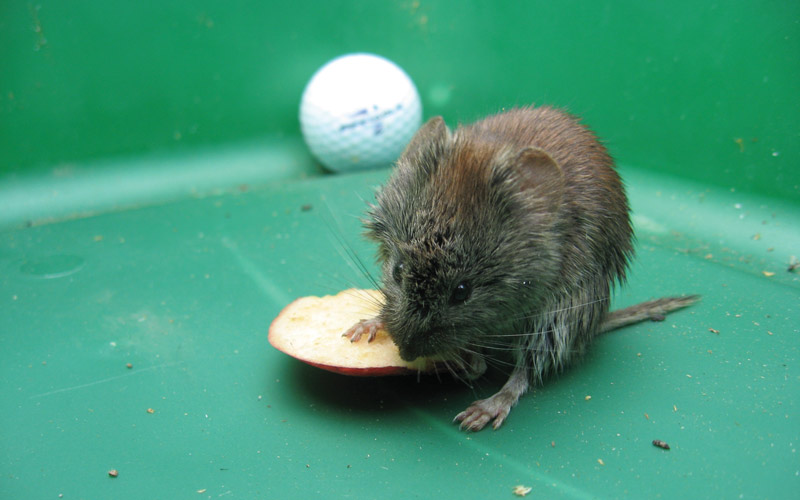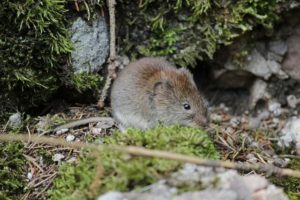Mastering Vole Pest Control: Extensive Insights on Problem Prevention and Therapy Strategies
As building proprietors and caretakers, the presence of voles can pose a considerable challenge to preserving the integrity of our outdoor rooms. Understanding the ins and outs of vole behavior is critical in developing effective pest control strategies. By identifying the subtle indications of vole invasion early on, we can take aggressive actions to stop extensive damage. In this discussion, we will certainly discover the subtleties of vole habits, dive into the recognition of invasion indicators, and discover the most efficient prevention and therapy approaches. Stay tuned to discover the understandings that will certainly encourage you to understand vole pest control and secure your home against these elusive rats.
Understanding Vole Habits
Examining the foraging patterns of voles offers important understandings into their habits and environment choices. By observing their foraging habits, scientists can acquire a far better understanding of where voles like to develop their environments and the level of their ecological influence.
Research study indicates that voles exhibit careful feeding practices, favoring roots, roots, and seeds. This dietary choice influences their foraging patterns, leading them to locations abundant in plant life and ground cover. Furthermore, voles are recognized to produce elaborate passage systems for foraging and nesting functions, indicating a high level of flexibility to their environments.
Recognizing vole habits is important for executing targeted pest control steps that disrupt their environment choices and foraging activities (vole control). By researching their actions, professionals can establish much more effective prevention and therapy approaches to take care of vole infestations

Identifying Signs of Vole Invasion
Vole problems can be identified by identifying certain signs of their existence in a location. Among one of the most usual signs of a vole infestation is the presence of surface paths. Voles produce networks of slim paths on the ground that are usually about two inches vast. These paths are frequently found in grassy locations or beneath mulch or ground cover where voles can relocate easily and search for food.
An additional vital indicator of vole invasion is the visibility of tiny burrow openings in the ground. Voles dig shallow burrow systems with several entrances and leaves. These burrows function as sanctuary and nesting websites for the voles. Additionally, voles are recognized to leave chewed plant stems, roots, and bulbs near their burrow openings, showing their feeding activity in the area.
Moreover, vole droppings can additionally symbolize their existence. Vole droppings are little, brownish, and round in shape, looking like grains of rice. Discovering these droppings along runways or near burrow openings can validate a vole infestation. By being vigilant for these signs, building proprietors can without delay attend to vole problems and stop further damages.
Executing Aggressive Prevention Measures

Moreover, employing natural vole deterrents like castor oil-based repellents or killer urine can work as effective safety nets. It is additionally suggested to frequently inspect outside areas for any kind of indicators of vole task, such as runways or delve openings, to attend to prospective infestations quickly. vole control. By embracing these proactive prevention approaches, homeowner can dramatically lower the probability of vole damages and keep the health and aesthetics of their landscapes
Efficient Therapy Strategies
Including targeted trapping approaches and making use of accepted rodenticides are crucial parts of efficient treatment techniques for managing vole infestations. Regular monitoring and maintenance are additionally essential aspects of successful therapy techniques to make certain that vole populaces are maintained under control. By combining capturing, rodenticides, environment alteration, and constant monitoring, efficient vole bug control can be attained.
Surveillance and Maintenance Tips
Maintaining an organized schedule for tracking and carrying out routine upkeep tasks is critical to maintain the performance of vole insect control measures. Normal tracking permits the early discovery of vole activity, making it possible for prompt intervention before infestations worsen. To efficiently monitor vole populations, purposefully put traps can be made use of in vole paths or near burrow entrances. By consistently inspecting these traps, homeowner can gauge his response the extent of vole activity and change control methods accordingly.
Additionally, preserving a clean and well-kept landscape is essential in vole prevention. Cleaning away particles, such as heaps of wood or dense plants, removes potential vole habitats. Regularly cutting grass and trimming vegetation helps in reducing vole concealing spots and reduces their accessibility to food resources.
In addition, continuous upkeep of physical obstacles, such as fences or cord mesh, is crucial to avoid vole invasion. Evaluating and repairing any problems to these structures makes certain that vole control continues to be reliable in protecting buildings from infestations. By incorporating these tracking and upkeep methods into a thorough vole bug control plan, individuals can efficiently take care of vole populaces and protect their homes from damages.
Final Thought
To conclude, understanding vole insect control needs a solid understanding of vole habits, the ability to determine signs of problem, executing aggressive prevention actions, effective treatment approaches, and consistent monitoring and maintenance. By taking a thorough method to vole control, people can effectively handle and avoid infestations, ultimately shielding their residential property and surrounding atmosphere from damages caused by these little rats.
In this conversation, we will certainly explore the nuances of vole behavior, delve right into the identification of invasion signs, and reveal the most reliable avoidance and treatment approaches.Including targeted trapping methods and utilizing accepted important site rodenticides are crucial elements of efficient treatment approaches for taking care of vole problems. To efficiently keep track of vole populaces, purposefully put traps can be used in vole runways or near burrow entries. Inspecting and repairing any kind of damages to these frameworks makes sure that vole control remains reliable in protecting residential properties from invasions. By including these monitoring and maintenance practices into a comprehensive vole insect control strategy, people can efficiently handle vole populaces and safeguard their properties from damage.